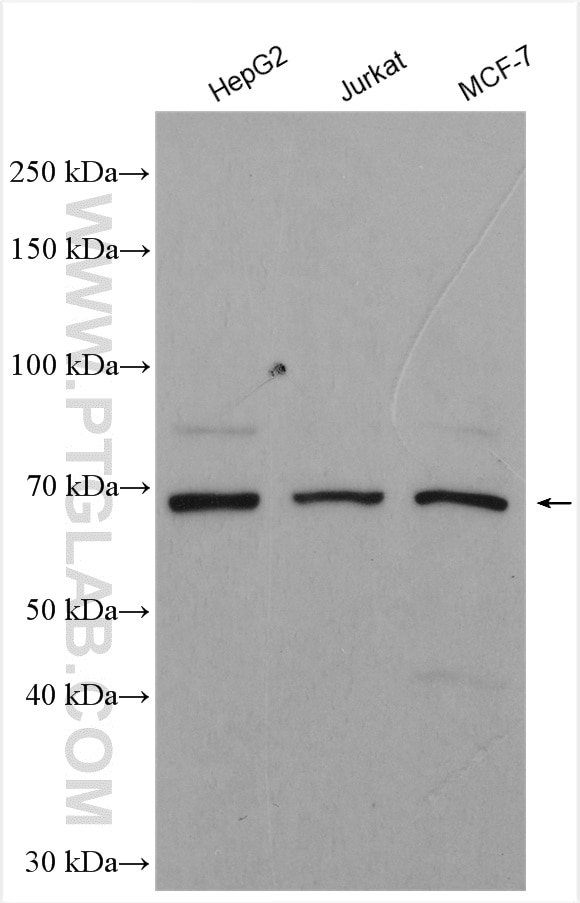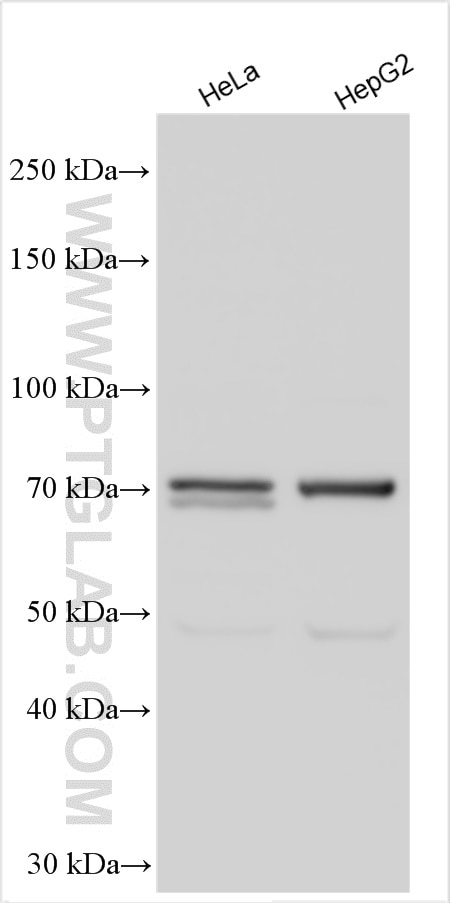MIER2 Polyklonaler Antikörper
MIER2 Polyklonal Antikörper für WB, ELISA
Wirt / Isotyp
Kaninchen / IgG
Getestete Reaktivität
human, Maus, Ratte
Anwendung
WB, ELISA
Konjugation
Unkonjugiert
Kat-Nr. : 17426-1-AP
Synonyme
Geprüfte Anwendungen
| Erfolgreiche Detektion in WB | HepG2-Zellen, HeLa-Zellen, Jurkat-Zellen, MCF-7-Zellen |
Empfohlene Verdünnung
| Anwendung | Verdünnung |
|---|---|
| Western Blot (WB) | WB : 1:1000-1:6000 |
| It is recommended that this reagent should be titrated in each testing system to obtain optimal results. | |
| Sample-dependent, check data in validation data gallery | |
Produktinformation
17426-1-AP bindet in WB, ELISA MIER2 und zeigt Reaktivität mit human, Maus, Ratten
| Getestete Reaktivität | human, Maus, Ratte |
| Wirt / Isotyp | Kaninchen / IgG |
| Klonalität | Polyklonal |
| Typ | Antikörper |
| Immunogen | MIER2 fusion protein Ag11491 |
| Vollständiger Name | mesoderm induction early response 1, family member 2 |
| Berechnetes Molekulargewicht | 545 aa, 60 kDa |
| Beobachtetes Molekulargewicht | 65-70 kDa |
| GenBank-Zugangsnummer | BC028203 |
| Gene symbol | MIER2 |
| Gene ID (NCBI) | 54531 |
| Konjugation | Unkonjugiert |
| Form | Liquid |
| Reinigungsmethode | Antigen-Affinitätsreinigung |
| Lagerungspuffer | PBS with 0.02% sodium azide and 50% glycerol |
| Lagerungsbedingungen | Bei -20°C lagern. Nach dem Versand ein Jahr lang stabil Aliquotieren ist bei -20oC Lagerung nicht notwendig. 20ul Größen enthalten 0,1% BSA. |
Hintergrundinformationen
Mesoderm induction early response 2 (MIER2) is a member of the MIER family of proteins, which is relatively conservative in evolution and includes three members: MIER1, MIER2, and MIER3. The MIER family is known to contribute to histone deacetylase (HDAC) activity and actively participate in histone deacetylation (PMID: 28046085; PMID: 38702028). In renal cell carcinoma, MIER2 represses PGC1A expression by recruiting HDAC1 to deacetylate P53 (PMID: 28046085).
Protokolle
| PRODUKTSPEZIFISCHE PROTOKOLLE | |
|---|---|
| WB protocol for MIER2 antibody 17426-1-AP | Protokoll herunterladen |
| STANDARD-PROTOKOLLE | |
|---|---|
| Klicken Sie hier, um unsere Standardprotokolle anzuzeigen |



